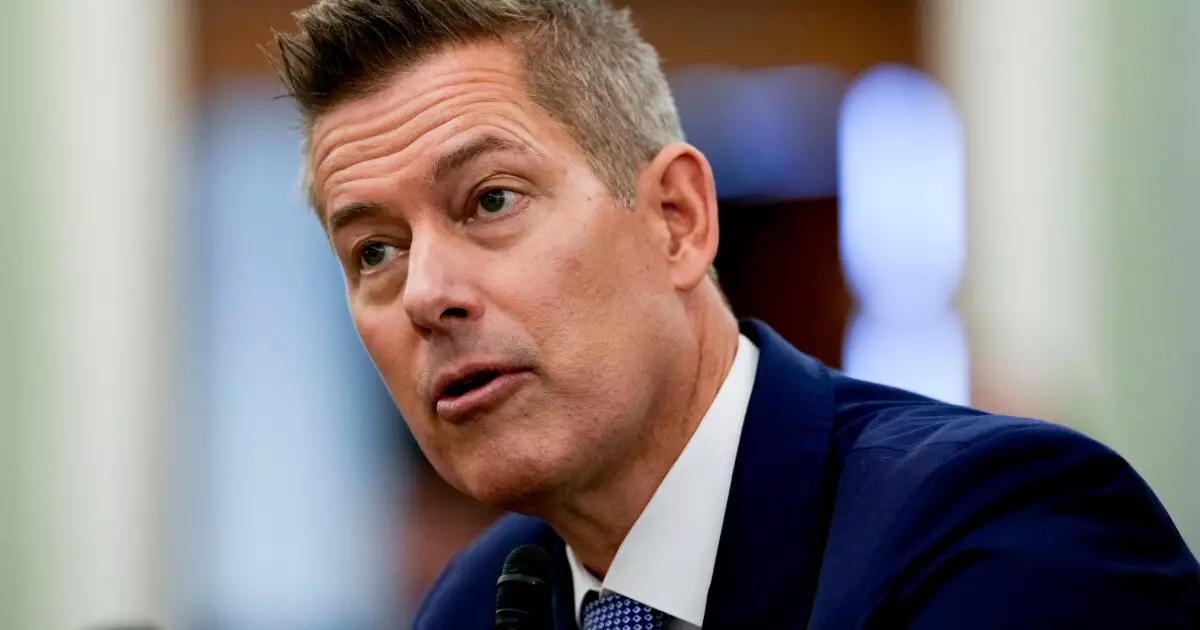As we navigate the complexities of public transit funding in the aftermath of the pandemic, it’s essential to recognize the precarious position that many transit authorities find themselves in. Funding streams, once buoyed by the ambitious Infrastructure Investment and Jobs Act (IIJA), are beginning to taper off, revealing cracks in an already fragile system. With directives from new federal guidelines issued by the Department of Transportation under Secretary Sean Duffy, transit systems are now tasked not only with serving the public but also with navigating an ever-expanding list of bureaucratic requirements.
Funding Challenges: The Sword of Damocles
The financial landscape is shifting, and it’s not only urban metropolises like New York and Washington, D.C., feeling the heat. The expected increase in funds, which sounds merely like a passing breeze—with a mere 0.4% rise in allocated budgets—does little to placate authorities aiming for restoration and recovery. The reality is harsher; a penchant for red tape coupled with stagnant funding creates a myriad of challenges that can cripple essential transit services if corrective measures are not taken swiftly.
For instance, the New York Metropolitan Transportation Authority (NYMTA) must reconcile its operational budget while ensuring compliance with fresh safety mandates that come with threats of potential funding cuts. This puts them in a Catch-22 scenario, where doing what’s right for the public’s safety might simultaneously undermine financial viability.
Public Safety and Political Compliance: A Tug-of-War
Many in the transit sector are rightly concerned about the real implications of a stressed reliance on federal mandates. The constant stream of letters and guidelines from Secretary Duffy doesn’t merely represent bureaucratic oversight; it signals a profound shift in the expectations of how transit authorities are to operate. Pressure to eradicate crime and fare evasion at the granular level essentially demands not just infrastructural improvements, but also a systemic revamp of how we perceive public transportation as a public good versus a policing issue.
While the intent of making our streets and subway stations safer is laudable, the consequences may be dire if transit authorities are forced to prioritize political compliance over genuine public welfare. The mandate to lower crime rates may lead to over-policing in transit systems—a move that will likely alienate the very public these systems are meant to serve.
Cities on the Brink: A Potential Fiscal Abyss
Take, for instance, the situation faced by Chicago, which is currently at the mercy of federal funding decisions. With a vital $12 billion O’Hare expansion project that hinges on nearly $400 million from the feds, the stakes are monumental. Should the funding not materialize, the ripples will be felt far beyond the runways—it could inhibit projects critically needed for Chicago’s recovery and growth. This stands as a cautionary tale for many cities across the U.S. that are labeled as sanctuary cities, which could suffer the consequences of political decisions that hinge more on ideology than on pragmatism.
As public transit continues to strive for a gradual recovery in ridership rates, the underlying budget shortfalls could serve as a grim reminder that we are still living in the shadows of the pandemic. Leslie Richards, formerly of the Southeastern Pennsylvania Transportation Authority, underscores this concern brilliantly by voicing a staggering budget gap that may reach $200 million amidst the demand for a renewed focus on service quality.
The Iceberg Beneath the Surface
Nevertheless, the current predicament surrounding transit funding is layered beneath an iceberg of bureaucratic uncertainty. Polly Trottenberg’s remarks about the previous administration’s hesitance to approve ongoing or newly initiated projects bring to light a concerning evolution within federal transit policies. The maneuver of freezing funding arrangements while simultaneously attempting to renegotiate existing ones could leave cities floundering, caught in a tempest of regulatory dysfunction.
Ultimately, this situation highlights a dire need for comprehensive dialogue that transcends partisan lines. Navigating the dynamics of public transit funding calls for keen insight into what constitutes responsible governance, shedding the chains of outdated political agendas that ignore the nuanced realities faced by municipalities.
In essence, while the promise of federal funding remains—albeit dwindling—the real work lies in fostering trust and cooperation between federal agencies and local authorities, so that our public transit systems can emerge from this crisis not only intact but also rejuvenated and ready to serve the public again.

